
Tactics - Creating a sensible starting point
Creating a sensible starting point
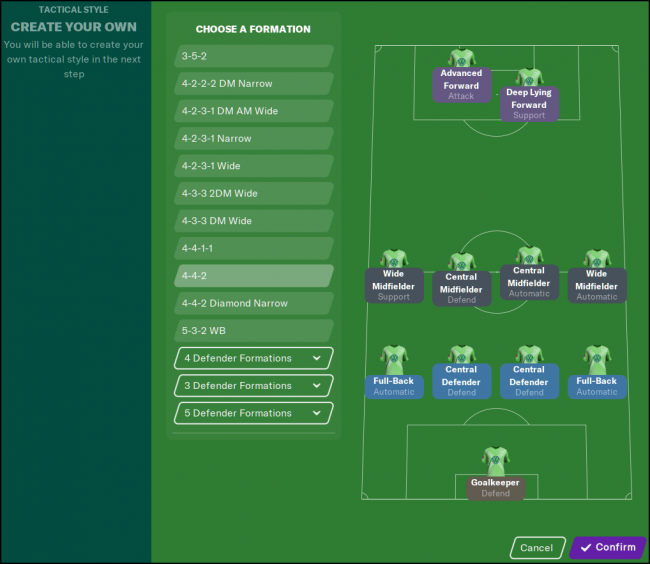
Option A: "Tactics don't tickle my fancy, but I still want to do well!"
In that case, I suggest you download a pre-made one. There's plenty of good tacticians around who're creating and testing tactics all the time and if that's how you want to play the game, who's there to stop you. In fact, if you're completely new to the game and want to ease your way into it, it's what I recommend doing—download a tactic that's been tested to do well, focus on bringing in the right players and get familiar with the game slowly.
However, I do recommend you do some research. Different tactics perform differently with different teams and you need the kind that fits yours. For example, you don't want to use tactics only tested with elite teams, if you're managing a lower league club; the AI will approach games differently based on your club's Reputation and Form.
Download FM 2021 Tactics
Option B: "I'd like to create my own tactic, but don't know where to begin!"
Now, don't expect this to be any sort of a complex tactical guide, there's plenty of those out there already. If you're an experienced player, you may very well already be familiar with most of the points I'm about to list; my aim is to help inexperienced players create a simple and sensible tactic that can serve them as a good starting point.
- Start simple. This can't be stressed enough. Don't feel under pressure to select a plethora of Team Instructions just because they exist—select two or three absolutely key for your desired playing style and leave the rest alone for now.
- Roles and Duties are key. Select coherent ones and your tactic will do well, mess them up and you're likely to encounter issues. Each Role has its own description—read it and read it more than once. There's many clues to be picked up from descriptions and movement animations alone. Pre-selected Player Instructions can also be key to understanding how certain Roles behave.
Roles and Duties
Let's quickly stop on the topic of Roles and Duties. Firstly, let's try to understand their behaviour.
A quick generalization:
- Defend: Stay behind, take little risk
- Support: Offer yourself for passes, take moderate risk
- Attack: Run off early, take high risk
- Left side: left full back, left winger, left central midfielder, left striker
- Right: right full back, right winger, right central midfielder, right striker
- Center: central defenders, central midfielders, central striker
- Do our Roles cooperate well together in terms of space creation (e.g. left IW cutting inside, consequently dragging opposition defender with him and opening up space for left FB to run into)?
- Is there enough defensive cover for our attacking players (e.g. left CM on Defend Duty to cover for left FB on Attack Duty)?
- Roam From Position: we can expect this player to leave his designated position often—is there enough defensive cover, or could we get hit on the counter if he losses possession high up the pitch?
- Take More Risks: we can expect this player to attempt riskier through balls—who is trying to capitalize on those passes (e.g. regular forward runs)?
- Dribble More: we can expect this player to often run with the ball on his own—is he good enough to beat his man regularly or could his dribbling attempts result in needless losses of possession?
Mentality
In simple terms, Mentality sets your general risk-taking profile. Ignore the names and imagine it as a lever you can pull up and down, depending on how risky you want your team to be—with (forward runs, dribbles, passes, shots) and without the ball (marking, closing down, tackling).
The higher the Mentality, the more options a player will consider in any given situation, because his risk-taking threshold is high (he will consider most options, because he doesn't mind if some are risky).
The lower the Mentality, the less options a player will consider in any given situation, because his risk-taking threshold is low (he will only consider options he deems safe).
Now that we understand this, we can understand how every individual Role in our tactic will behave, based on its Individual Mentality description (Very Defensive, Defensive, Cautious, Balanced, Positive, Attacking, Very Attacking)—click on every Role you've selected and try understanding just how much risks it will be willing to take. As you change your Mentality and Duties, those will change, so check on them often!
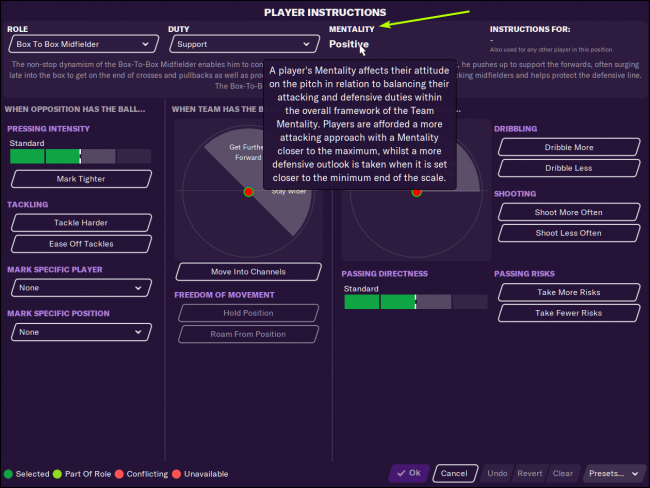
How It All Works Together
One thing to keep in mind, is that all tactical instructions are interconnected with each other.
For example, a player instructed to Take More Risks on a Cautious Mentality, will not take the same amount of risks as he would on an Attacking one. Defend-Duty player will be less defensive on an Attacking Mentality, than he would be on a Cautious one. Attack Duties will be more attacking on an Attacking Mentality, than they would on a Cautious one.And so on and so forth; never look at any tactical decision you make in isolation, as ultimately they all work together.
Understanding Your Formation
While Roles and Duties define instructions and attacking positioning of our players, Formation defines their starting defensive positions—the shape players will generally look to retreat into after losing the ball.
Before deciding on one, we should understand the style of football we want to play, based on the quality of our squad and expectations.
Some examples:
- If I want to play a high-pressing game and engage opposition high up the pitch, I will select a top-heavy Formation, which gives my players advanced starting positions (e.g. 4-2-3-1, 4-2-4)
- If I want to defend in a low block and invite opposition into my half, I will select a bottom-heavy Formation, which gives my players deeper starting positions (e.g. 4-4-2, 4-1-4-1)
Opposition Instructions
I would highly recommend you leave Opposition Instructions alone until you're comfortable with the game—don't assign them to your staff, leave them empty or only select the ones you're sure about.
Some Opposition Instructions can work against you, if you assign them without taking your playing style and players into account (e.g. players getting pulled out of positions due to Close Down Always, opposition players getting funneled into your weak areas due to Shove Onto Foot or slow players getting beat easily due to Mark Tighter).
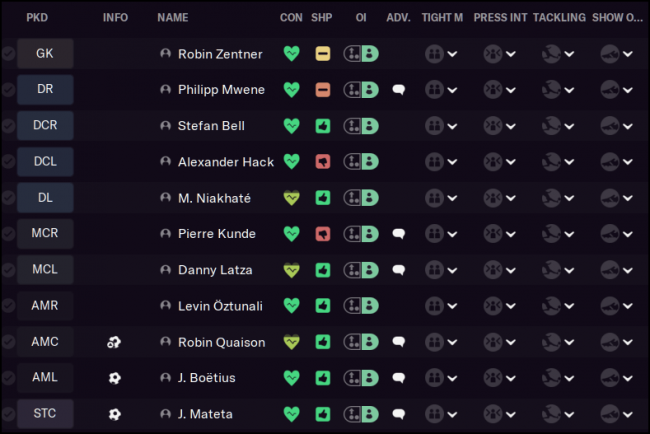





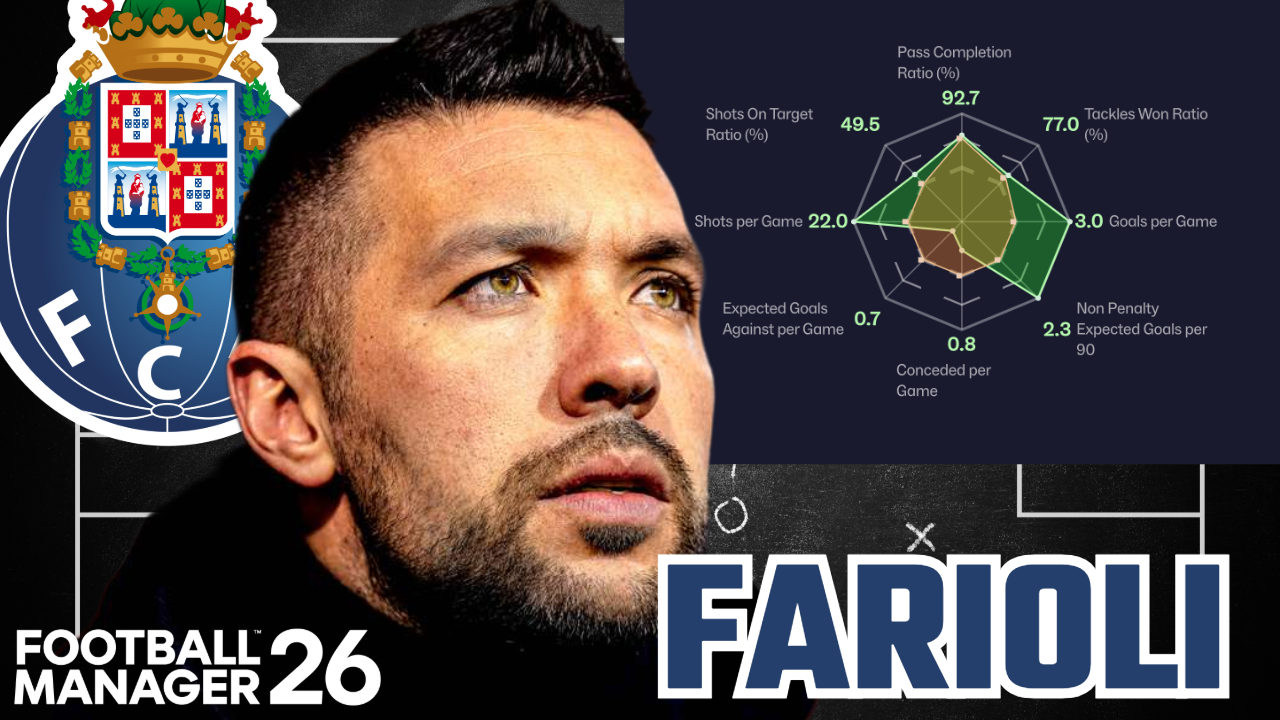
![FM26 2025-26 Real Fixture & Results [27-11-2025]](https://www.fmscout.com/datas/users/realresult_thumb_25_26_fm26_257759.png)
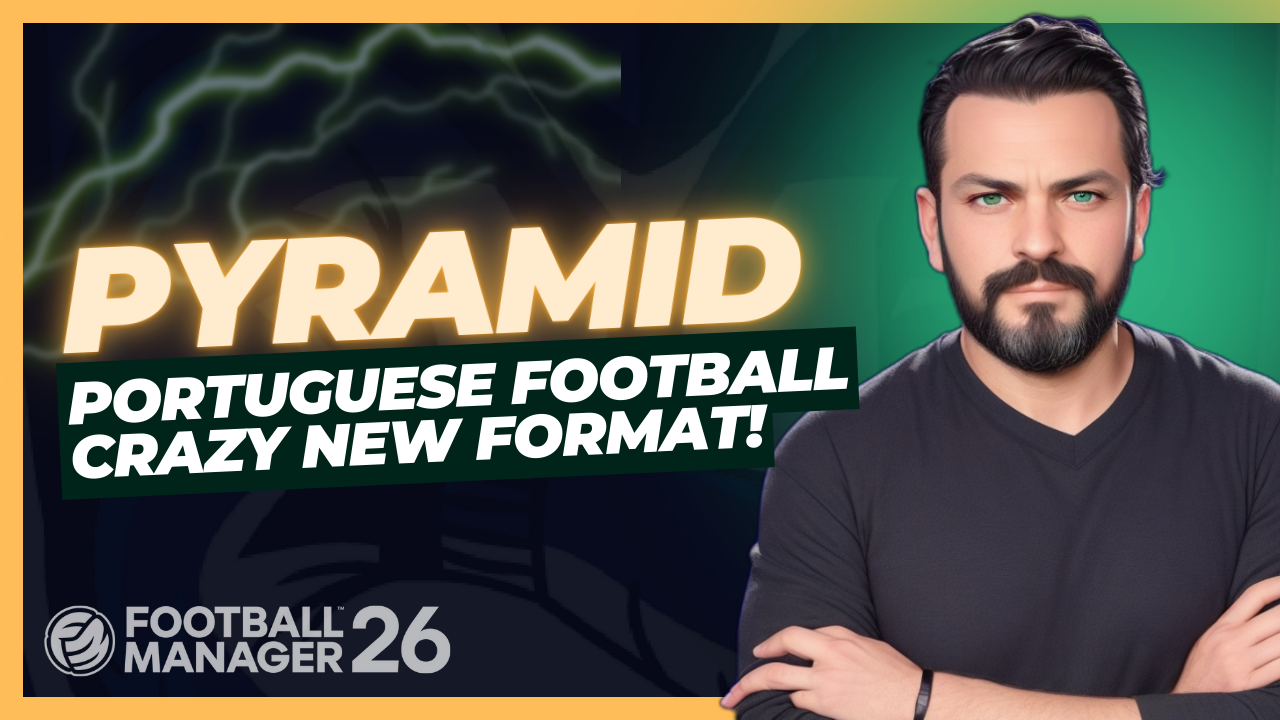



Discussion: Football Manager for Dummies - Guide
4 comments have been posted so far.